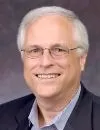While obstacles still exist for first generation Hispanic students seeking a college education, helpful resources are available for those who seek them, a panel of Hispanic college graduates told an audience at a University of Maryland Global Campus (UMGC) Hispanic Heritage Month event.
Roger Figueroa pointed to his academic journey as an example. He was born in Nicaragua and came to the United States as a child. His educational aspirations finally led him to UMGC, where he earned both a bachelor’s degree and a master’s degree in business administration.
“I am first generation, so my parents did not know the whole process of where to start,” he said. “It fell on me to figure things out.”
Figueroa said he took the initiative and enrolled at his local community college and then started asking questions. Bit by bit, he figured out the process and connected with groups that helped him find scholarships and other financial aid options. Still, having to work full time while attending classes was a balancing act, he said, and most scholarships did not help students who attended college part time.
He graduated from a community college and was admitted to University of Maryland, College Park, but he found the class schedule too rigid for his work schedule. He was about to drop out when he remembered one of his community college advisers had told him about UMGC and its great business program. He also was told that UMGC offered scholarships to Maryland community college graduates.
“It provided the flexibility that I needed to navigate work and school,” he said. “So, when you get challenges along the road, you learn how to manage them, but you just got to continue.”
The UMGC diversity event, Supporting Latino Students Through Their Higher Education Journey, focused on the experiences of Latino students as they navigated their way through the higher education system, seeking the credentials needed to succeed in their chosen careers.
Halek Sanchez said she came to the United States from Panama at the urging of her aunt to finish her last two years of high school in Prince George’s County, Maryland. As an English for Speakers of Other Languages (ESOL) student, she didn’t think that she could go to college in the United States, she said. With the help of a faculty mentor, however, she put herself forward for a program that allowed her to explore Towson University for a week.
That experience enabled her to meet with an advisor who explained the process of getting into college, she said. If she hadn’t taken advantage of the opportunity her faculty mentor told her about, she probably would not have gone to college.
For Cece Paz, connecting with student organizations and groups was the key to success. Paz was born in the United States, but her parents were from El Salvador and did not know how the college admission process worked. In her high school, few of the Latino students made it to the 12th grade.
“Luckily for me, I found a Latina group at Morgan State,” she said. “That networking worked for me and made my transition into college easier.”
Paz received a scholarship under a diversity program for the historically Black university. She finished her undergraduate degree in business administration at UMGC.
“Building groups is critical for getting through college, especially when you are first generation,” she said. “It’s hard because you don’t know anybody who’s done it before. You’re setting the path for everyone.”
Switching to UMGC, Paz noted, meant starting anew—and the need to connect again with other students.
“There weren’t many Latinos at UMGC that I knew,” she said. “Finding your group and finding the support was the hardest part, but if you do the research, you find the groups and the tutors and what works for you to push you through to the finish line.”
Joining the UMGC softball club also was a big help, she said, because it gave her a group of students and faculty to bond with.
A couple of the panelists talked about the influence of the D.C. metropolitan area’s Latin American Youth Center (LAYC) in providing them the direction they needed to go to college. Michael Ludgardo, the son of Peruvian immigrants, said his parents knew nothing about applying to college.
“I was very lucky to join a program called Upward Bound at a Latin American Youth Center when I was in the 10th grade,” he said. “It gave me the momentum to find scholarships, to prepare for the SATs, and to be around other classmates that had the same vision. It was a huge support.”
Once he got to George Mason University, Ludgardo ran into trouble when he lost the group support that had helped usher him through high school and into college. He joined a fraternity. A leadership role at the Hispanic Student Association also helped him bounce back.
Manuel Sibrian, who was born and raised in El Salvador, came to the United States in 2009 after his grandfather was killed by MS 13 gang members. He credited a LAYC program with setting him on his career path. Through an intern program, he spent a day shadowing a Latino police officer from Montgomery County who had graduated from the University of Maryland, College Park.
“I was able to relate to him and his career path,” Sibrian said. They kept in touch and that led Sibrian to a two-year internship with the Montgomery County Police Department. He then went to the University of Maryland, earning a degree in criminology and criminal justice with a minor in U.S. Latina/o Studies.
Now he is a police officer in Washington, D.C.
“I love to come to work and help individuals from different walks of life in their worst situations,” he said. “I am also proud to represent my Hispanic community in law enforcement.”

Share This